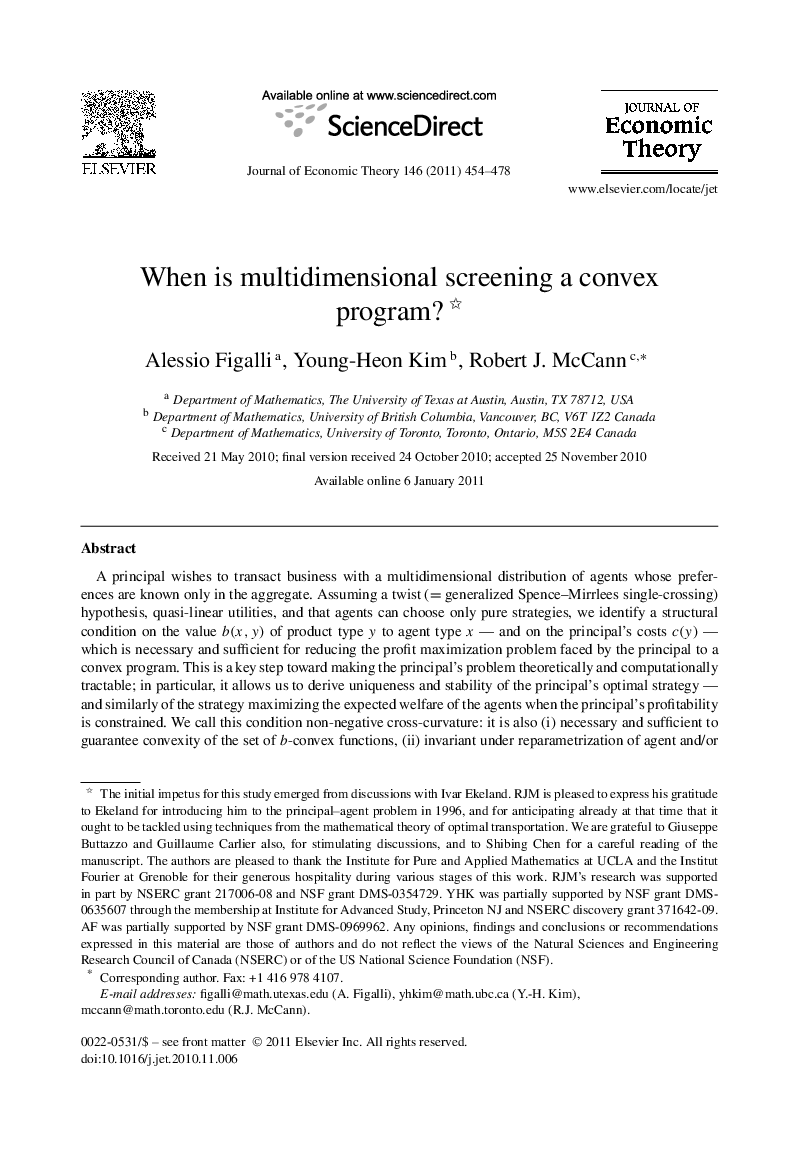| Article ID | Journal | Published Year | Pages | File Type |
|---|---|---|---|---|
| 957107 | Journal of Economic Theory | 2011 | 25 Pages |
A principal wishes to transact business with a multidimensional distribution of agents whose preferences are known only in the aggregate. Assuming a twist (= generalized Spence–Mirrlees single-crossing) hypothesis, quasi-linear utilities, and that agents can choose only pure strategies, we identify a structural condition on the value b(x,y)b(x,y) of product type y to agent type x — and on the principalʼs costs c(y)c(y) — which is necessary and sufficient for reducing the profit maximization problem faced by the principal to a convex program. This is a key step toward making the principalʼs problem theoretically and computationally tractable; in particular, it allows us to derive uniqueness and stability of the principalʼs optimal strategy — and similarly of the strategy maximizing the expected welfare of the agents when the principalʼs profitability is constrained. We call this condition non-negative cross-curvature: it is also (i) necessary and sufficient to guarantee convexity of the set of b-convex functions, (ii) invariant under reparametrization of agent and/or product types by diffeomorphisms, and (iii) a strengthening of Ma, Trudinger and Wangʼs necessary and sufficient condition (A3w) for continuity of the correspondence between an exogenously prescribed distribution of agents and of products. We derive the persistence of economic effects such as the desirability for a monopoly to establish prices so high they effectively exclude a positive fraction of its potential customers, in nearly the full range of non-negatively cross-curved models.
